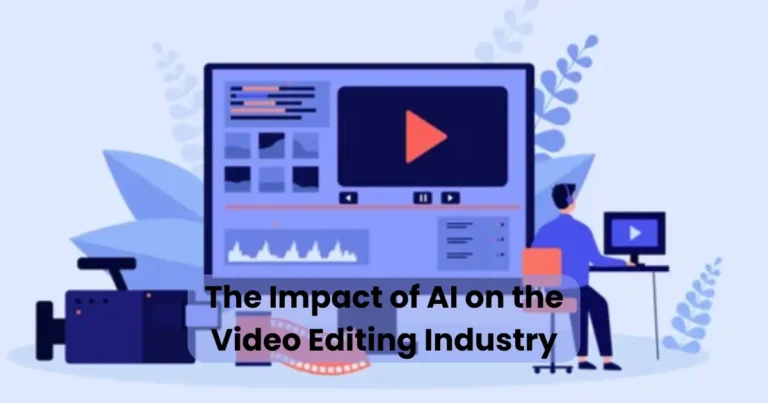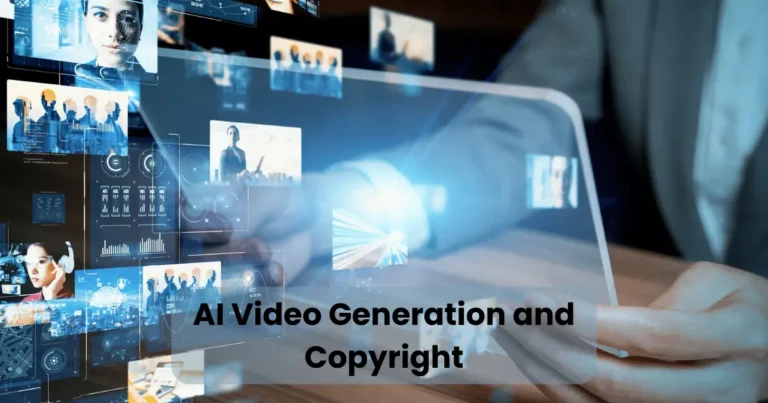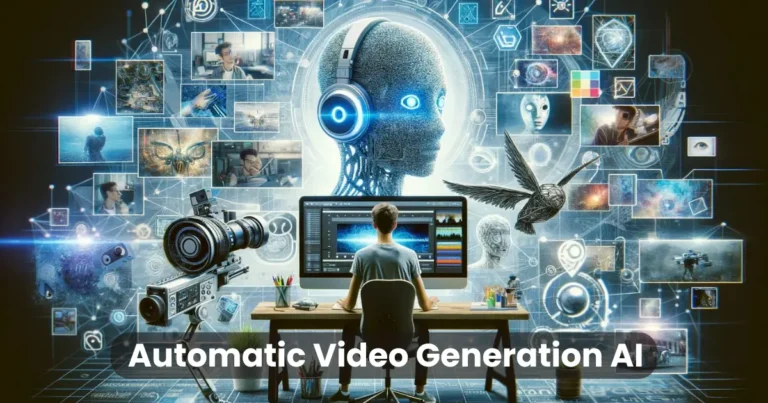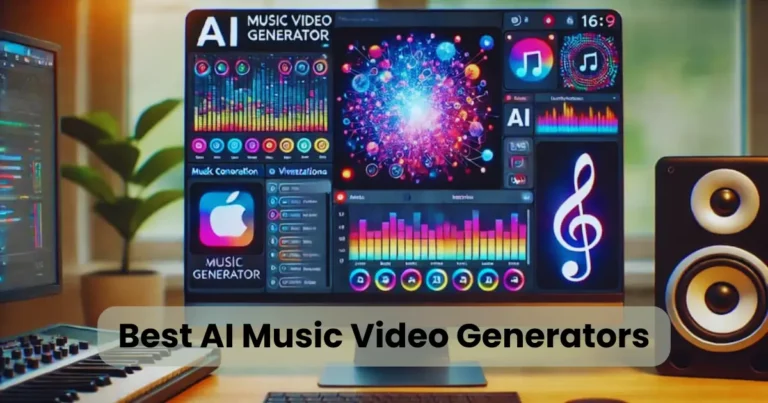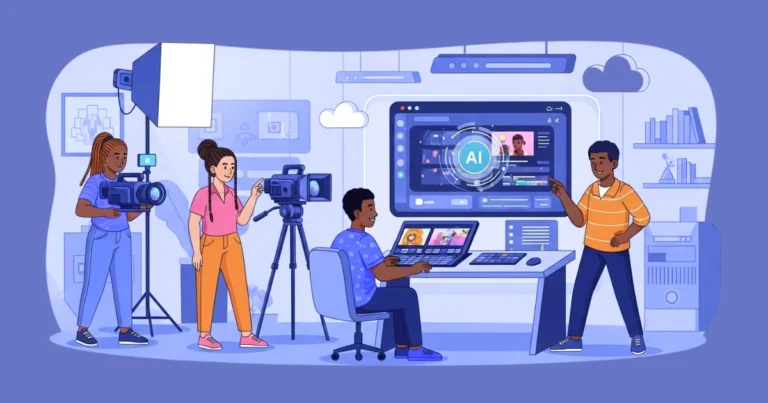The Science Behind AI Video Generation
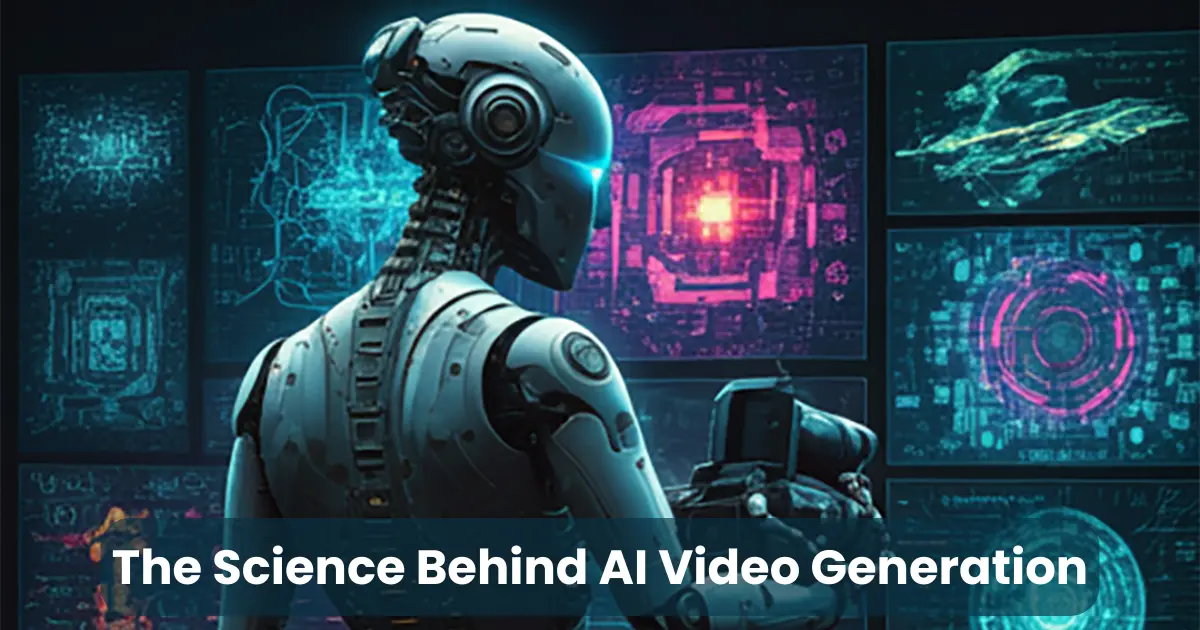
Contents
- 1 What Is AI Video Generation?
- 2 Core Technologies Driving AI Video Generation
- 3 How AI Transforms Video Production
- 4 Data Input: The Fuel Behind AI Video Creation
- 5 Real-Time Rendering and Automation
- 6 Applications of AI Video Generation
- 7 Challenges in AI Video Generation
- 8 Future of AI-Powered Video Creation
The science behind AI video generation is revolutionizing the way we create visual content. By combining cutting-edge technologies like machine learning, deep learning, and neural networks, AI systems can now generate lifelike videos from text prompts, voice input, and even simple sketches. This innovative approach saves time, reduces costs, and expands creative possibilities across industries.
Unlike traditional video production, which requires extensive human effort and technical skills, AI video generation automates complex tasks such as scene composition, character animation, and voice syncing. This means creators can focus more on storytelling and less on logistics. Moreover, as algorithms continue to learn from massive datasets, the quality and realism of AI-generated videos improve dramatically.
In the following sections, we’ll dive deeper into the science behind AI video generation, examine the key technologies that power it, and explore its transformative impact across various fields.
What Is AI Video Generation?
AI video generation is the automated process of creating videos using artificial intelligence technologies. Instead of relying solely on human input for scripting, filming, and editing, this process leverages advanced algorithms to generate video content from raw data such as text, audio, or images.
At its core, AI video generation involves teaching machines to understand visual and audio elements then intelligently combining them to produce coherent video sequences. The system analyzes input prompts, predicts suitable visuals, synchronizes voiceovers, and applies transitions and effects, all in real-time or with minimal delay.
Moreover, this technology eliminates the traditional barriers of video production. For example, instead of hiring actors and setting up studios, content creators can input a script into an AI system, which will then generate a virtual character to narrate it. As a result, even individuals with little to no technical expertise can now produce high-quality videos with ease.
Thanks to continuous advancements in deep learning and computer vision, the science behind AI video generation is becoming more precise and accessible. From generating animated explainers to creating virtual influencers, AI is now a powerful tool in the modern content creation toolbox.
Core Technologies Driving AI Video Generation
To truly understand the science behind AI video generation, we must examine the powerful technologies that make it possible. These core components work together to mimic human creativity while drastically improving speed and scale.

1.Machine Learning
Machine learning serves as the backbone of AI video tools. It allows systems to learn from massive amounts of data, such as video clips, audio files, and written content. Over time, the model improves its ability to predict what visuals or transitions make sense based on given inputs. As a result, the machine adapts to user preferences and produces increasingly accurate video content.
2.Deep Learning
Deep learning takes machine learning a step further. Using multi-layered neural networks, it can identify intricate patterns in data. This enables AI to recognize facial expressions, interpret emotions, and even understand context within a scene. Deep learning ensures that the final video output isn’t just technically correct but also emotionally engaging.
3.Neural Networks
Neural networks simulate the human brain by using layers of nodes to process data. In AI video generation, they analyze complex inputs such as text-to-video prompts, matching them with suitable animations, camera angles, or characters. This is essential to producing visually coherent scenes.
4.Generative Adversarial Networks (GANs)
Perhaps the most groundbreaking innovation in the science behind AI video generation is the use of GANs. A GAN consists of two networks: a generator that creates videos and a discriminator that evaluates them. They work in a loop, constantly improving the quality of output until the generated video becomes nearly indistinguishable from human-made content.
How AI Transforms Video Production
As we explore the science behind AI video generation, it becomes evident that this technology is reshaping the entire video production workflow. From pre-production planning to post-production editing, AI is streamlining every step with incredible precision and speed.

Traditionally, video creation required extensive resources professional equipment, skilled crew members, and countless hours of manual editing. However, AI tools now automate many of these tasks. For instance, AI can convert a written script into a narrated video with animated characters, appropriate background music, and visual effects all in a matter of minutes.
Additionally, AI video generation platforms offer intuitive interfaces where users can drag, drop, or input text to generate dynamic content. These systems handle voice synthesis, lip-syncing, background rendering, and scene transitions automatically, reducing the need for human intervention.
Another significant transformation is real-time personalization. AI can tailor video content based on audience data, creating multiple versions of the same video optimized for different demographics or viewer preferences. This level of customization was once unimaginable at scale.
In essence, the science behind AI video generation doesn’t just automate it elevates. It empowers creators to focus on storytelling while AI handles the technical complexities, making high-quality video production accessible to everyone, regardless of skill level.
Data Input: The Fuel Behind AI Video Creation
To fully grasp the science behind AI video generation, we must understand the critical role of data input. Data acts as the fuel that powers the entire AI video creation process. Without rich, high-quality data, even the most advanced algorithms would fail to produce realistic or relevant content.
AI video generation systems rely on various types of input text, audio, images, and motion data. Each type contributes to different aspects of the final video. For example, a simple text prompt like “a person walking through a futuristic city” provides context. The AI then translates that into visual frames, character movement, and environmental details based on the data it has learned from.
Moreover, training datasets play a key role. These massive collections of labeled content videos, animations, speech samples, and more teach AI systems how to generate realistic visuals and natural transitions. The more diverse and extensive the training data, the better the system becomes at producing believable and engaging videos.
In some cases, user-generated content serves as input. For instance, uploading a voice recording or selfie allows the AI to personalize the video by creating a digital avatar or syncing lip movement with speech. This level of interaction demonstrates how essential and versatile input data is.
Ultimately, the science behind AI video generation depends heavily on the quality, quantity, and variety of input data. It’s the foundation upon which creativity and automation merge to produce compelling video experiences.
Real-Time Rendering and Automation
One of the most impressive breakthroughs in the science behind AI video generation is the ability to render and automate videos in real time. What once took hours or even days of manual labor can now be executed in minutes with astonishing accuracy and efficiency.

Real-time rendering allows AI systems to instantly convert input data into fully-formed video sequences. Whether it’s transforming a written script into an animated explainer or turning a static image into a dynamic 3D scene, AI performs these tasks on the fly. This speed not only accelerates production but also enhances creative experimentation, enabling creators to test and revise content rapidly.
Furthermore, automation plays a crucial role. AI automates complex processes such as scene selection, character motion, facial animation, background scoring, and even camera angles. These automated decisions are driven by pre-trained models that have learned from vast datasets, ensuring that each output remains contextually accurate and visually appealing.
Because of this, AI tools are now being integrated into mainstream video production workflows. Filmmakers, marketers, educators, and even small business owners use these tools to generate videos with minimal effort and maximum impact.
Simply put, the science behind AI video generation has evolved to a point where human creators no longer need to manage every technical detail. AI takes over the heavy lifting rendering scenes in real time and automating tedious tasks so creators can focus purely on storytelling and innovation.
Applications of AI Video Generation
The impact of the science behind AI video generation extends far beyond novelty it’s reshaping industries with practical, scalable applications. From marketing to education, AI-generated videos are solving real-world challenges by delivering fast, cost-effective, and personalized content.

1.Marketing and Advertising
Marketers now use AI to produce engaging ad campaigns in record time. By feeding product descriptions, target demographics, and brand voice into an AI system, companies can instantly generate video ads tailored to specific platforms or audiences. This automation increases speed to market and boosts return on investment.
2.Education and eLearning
In education, AI video generation enables the creation of interactive lessons, animated explainers, and voice-narrated tutorials. Instructors can simply input their scripts, and AI delivers fully produced educational content often with animated avatars or real-time subtitles enhancing learner engagement.
3.Entertainment and Gaming
Game developers and filmmakers are using AI to pre-visualize scenes, create dynamic environments, and even generate full-length animations. The ability to render videos quickly allows studios to iterate on creative ideas faster and at a lower cost.
4.Social Media Content
Influencers and content creators use AI to generate videos for platforms like TikTok, YouTube, and Instagram. Instead of spending hours editing, they can enter a prompt and let the AI handle the visuals, voice, and transitions freeing them to focus on growing their audience.
5.Business Communication
Businesses use AI videos to enhance internal communication, onboarding, and training. Instead of static PDFs or long emails, companies now deliver engaging, easy-to-understand videos that improve knowledge retention among employees.
As these examples show, the science behind AI video generation is not just a technological trend it’s a versatile solution with wide-reaching applications. It democratizes content creation, making high-quality video production accessible to individuals, startups, and large enterprises alike.
Challenges in AI Video Generation
Despite the rapid progress in the science behind AI video generation, this field still faces several notable challenges. While AI can replicate many aspects of human creativity, achieving consistent quality, ethical use, and technical precision remains complex.
1.Quality and Realism
Although AI video tools have come a long way, producing high-quality, hyper-realistic videos is still difficult. Artifacts, awkward animations, and unnatural voice synthesis can occasionally reduce the final product’s impact. Achieving seamless realism, especially in human expressions and motion, continues to be a technical hurdle.
2.Context Understanding
Another major challenge lies in the AI’s limited understanding of nuanced context. While it can follow patterns, it may misinterpret sarcasm, cultural references, or emotional undertones leading to videos that feel off-mark or confusing to viewers.
3.Computational Power
Real-time rendering and automation, though impressive, demand significant computing resources. Many AI models require powerful GPUs and cloud infrastructure, which can be expensive and environmentally taxing for widespread adoption.
4.Data Privacy
Since AI models are trained on vast datasets, often scraped from the internet, questions arise about intellectual property and data privacy. If an AI-generated video includes visual or audio elements that closely mimic real individuals or brands, it may raise legal concerns.
5.Ethical Misuse
Perhaps the most serious concern in the science behind AI video generation is the potential for misuse. Deepfakes, misinformation campaigns, and fabricated videos can be created with malicious intent. This poses ethical risks that developers and regulators must address to ensure responsible use of the technology.
Future of AI-Powered Video Creation
Looking ahead, the science behind AI video generation is set to become even more transformative. As technology continues to evolve, the future of AI-powered video creation promises greater realism, creative freedom, and ethical responsibility.

1.Hyper-Personalization
AI is moving toward creating hyper-personalized videos in real time. In the near future, content could adapt instantly based on viewer behavior, preferences, or even facial expressions allowing marketers, educators, and storytellers to deliver dynamic, audience-specific experiences.
2.Improved Realism and Emotional Intelligence
Emerging AI models are being trained with more diverse and high-fidelity data, enabling them to generate realistic facial expressions, subtle emotional cues, and natural speech patterns. As these improvements mature, AI-generated videos may become nearly indistinguishable from human-made ones.
3.Democratization of Filmmaking
Thanks to user-friendly platforms, independent creators and small businesses will gain access to production tools once reserved for large studios. AI will empower storytellers worldwide, reducing barriers related to cost, skill level, and technical knowledge.
4.Integration with Augmented and Virtual Reality
As AR and VR technologies expand, AI-generated video content will play a major role in building immersive environments. From virtual classrooms to interactive brand experiences, AI will help craft 360° narratives that respond to users in real time.
5.Stronger Ethical Frameworks
With increased power comes the need for better regulation. Governments, tech companies, and creators are expected to work together to ensure the science behind AI video generation is guided by ethical standards. Future tools will likely include watermarking, authenticity verification, and safeguards against deepfake misuse.
Conclusion
In summary, the science behind AI video generation is revolutionizing how videos are created, making the process faster, more efficient, and accessible to a wider audience than ever before. From core technologies and data input to real-time rendering and automation, AI is transforming every stage of video production.
While challenges like quality, ethical concerns, and computational demands remain, ongoing advancements promise to overcome these hurdles. The future holds exciting possibilities from hyper-personalized content and improved realism to the democratization of filmmaking and integration with immersive technologies. As AI continues to evolve, it will empower creators across industries to tell stories in innovative ways, pushing the boundaries of creativity and communication. Understanding the science behind AI video generation not only highlights the technology’s potential but also prepares us for its growing impact in our digital world.


